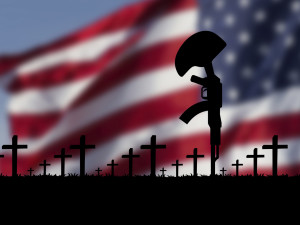
For a lot of people, Memorial Day marks the beginning of summer and the end of the school year. There’s a lot more significance to the day than simply vacation time. The holiday, which is always observed on the last Monday in May, has its origins in ancient traditions, but in the United States, it was really during the Civil War when the practice began to take hold. Don’t confuse Memorial Day with Veteran’s Day, which is held in November. Memorial Day commemorates the brave men and women who died while serving their country. Veteran’s Day honors the service of all the men and women who are in the military.
Historical Observances
For generations, people have placed flowers on the graves of their ancestors as a remembrance. In the United States, before the Civil War, veterans and those who died serving the country were honored and remembered. However, during the war between the states, soldiers’ deaths took on a new significance. The numbers alone were staggering, at over 600,000 dead. Imagine an entire community losing most of its men and boys to the war. Following this awful time in our history, the federal government began holding national ceremonies to bury the soldiers. The practice of decorating graves became more formal.
Many cities cite themselves as being the first to hold a Memorial Day observance. One of the most meaningful happened in Charleston, South Carolina. Residents of Charleston gathered on May 1, 1965, to clean up an unmarked gravesite of Union prisoners of war. Most of the people who participated in this memorial were newly freed black Americans. The Northern states began decorating graves more formally a few years later, choosing the May 30 date, because the flowers were more likely to be in bloom and it was not the date of any previous battle during a war.
Memorial Day began as “Decoration Day,” but the name changed during the 1880s. In 1966, President Lyndon B. Johnson named Waterloo, New York as the birthplace of the holiday and in the following year, Memorial Day was declared an official name by federal law. In 1968, Congress moved the holiday to the fourth Monday in May. Many organizations felt as if this undermined the very nature of the day. It took a few more years for states to begin celebrating on the last Monday in May, but now very few people remember that May 30 was the traditional day.
Remembering Memorial Day Today
Washington, D.C. holds many special festivities over Memorial Day weekend to honor the fallen soldiers. It’s no longer only the soldiers of the Civil War who should be remembered. During the 20th century, many Americans, both men and women, fought for freedom and liberty. Traditionally, on Memorial Day the U.S. flag is raised to the top of the staff, then lowered to half-mast at the beginning of the day. At noon, it is raised to full-staff for the rest of the day. Being at half-mast honors those who died during their service. When the flag is raised to full staff, it honors the living who continue to fight in remembrance of those who died. Many communities hold parades to remember veterans and service men and women.
This Memorial Day, take time remember those veterans in your family who gave their life for their country. Read “In Flanders Fields” by John McCrae or “Decoration Day” by Henry Wadsworth Longfellow, which are poems that commemorate Memorial Day and veterans’ service. Attend a parade with your family to support those who are currently serving. Sure, you can have fun over the weekend. After all, it’s a three-day holiday, and you’re most likely off work. But take just a few moments to remember why we have the freedom to celebrate.

